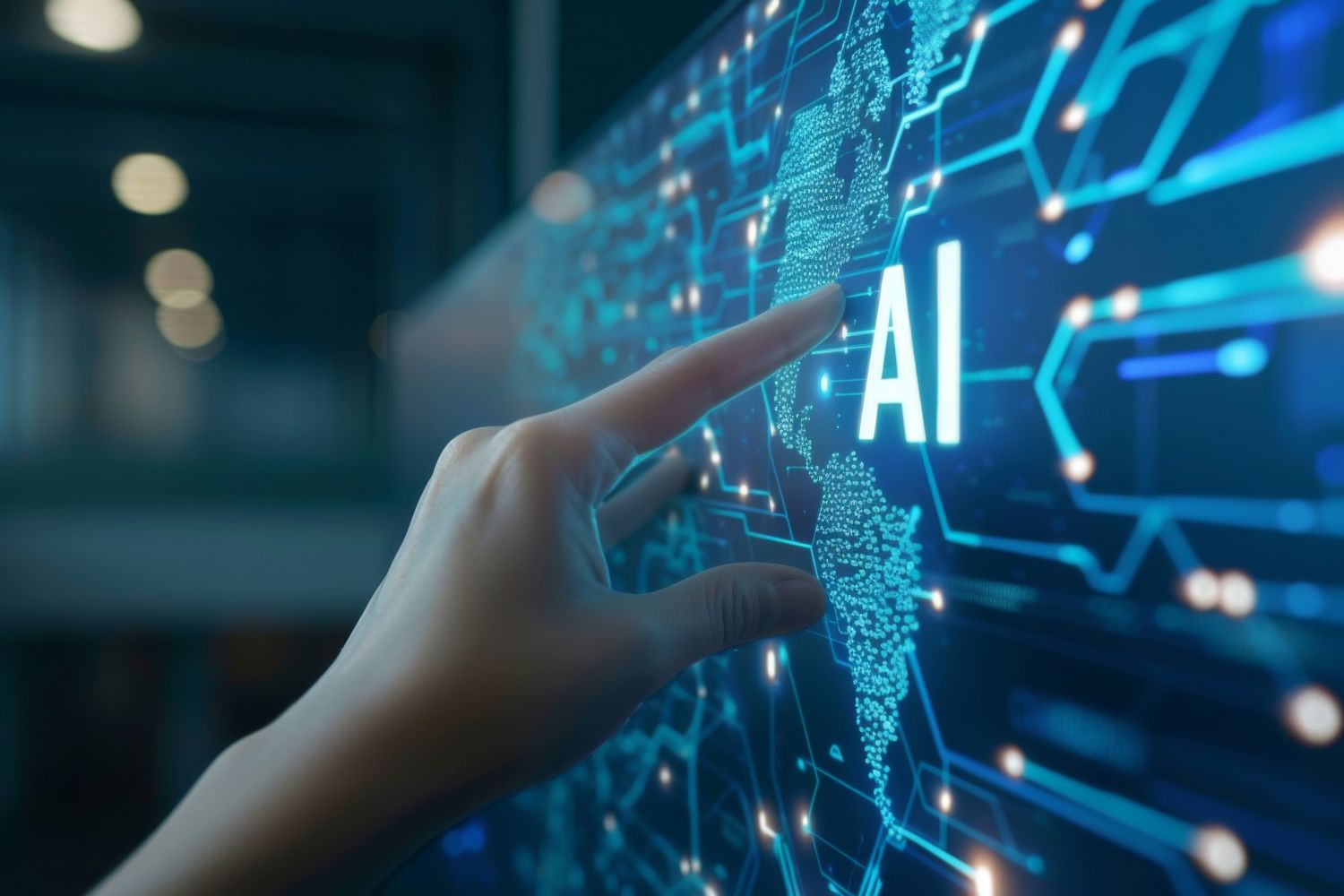What is Artificial Intelligence?
In 1991, Terminator 2: Judgement Day was the highest grossing movie at the box office, making over $520 million worldwide (equivalent to over $1.2 billion today when adjusted for Inflation). In the movie, an artificially intelligent network known as Skynet becomes self-aware and triggers a global nuclear war to wipeout mankind. Whilst this idea seemed far-fetched 33 years ago, for many people it was the first introduction to the concept of artificial intelligence (AI). For others, it accelerated their fascination with AI, and sowed seeds of fear about the malicious potential of the technology.
Artificial intelligence is a collection of technologies that allows machines and computers perform activities which usually require human intelligence and creativity. It encompasses several disciplines including computer science, software engineering, hardware engineering, linguistics and the arts. There has been a steady increase in the capabilities of AI over the last few decades, and the arrival of ChatGPT in 2022 heralded the arrival of generative AI (gen AI) in the public consciousness. Gen AI is the next step in the evolution of artificial intelligence, as it enables the creation of original content such as videos, text, and images, with minimal or no human input, using deep learning models.
With the proliferation of gen AI platforms, there has been an exponential growth in use cases for the technology across most industries. Most organisations are evaluating the impact of this technology on their strategy, and currently investigating ways to use gen AI to improve efficiency and drive growth. Optimising cloud migration using gen AI is therefore a fitting use case, as it has the potential to accentuate the advantages of the cloud.
What is cloud migration?
Cloud migration is the process of moving IT assets such as applications and data to the cloud from on-premises infrastructure. It’s one of the biggest IT trends today. Infosys Consulting recently conducted a detailed study on the reasons why cloud migrations fail, and the top five reasons for failure were identified as: a lack of qualified cloud professionals, technical challenges (such as data corruption), inadequate analysis of requirements and dependencies, inadequate stakeholder engagement, and the absence of a coherent vision. The corresponding failure symptoms (failure modes) were identified as; a mismatch between expectations and outcomes, cost overruns, inadequate migration strategy, time slippage and a lack of knowledge and skills.
This article will highlight the benefits of leveraging gen AI to improve the efficiency of cloud migrations and how gen AI can help address the reasons why cloud migrations are unsuccessful. It will also outline the concerns preventing the widespread adoption of gen AI, and finally make the case that AI can address most of the reasons for cloud migration failure and provide an increased chance for success.
How can AI make a difference to cloud migrations?
(1) Reducing the skills gap and flattening the learning curve for new architects
One of the major challenges facing many cloud migrations programmes, is the lack of skilled and experienced resources. This often manifests in three ways; limited migration skills at the start of migration programs to steer in the right direction, high turnover of staff due to a competitive job market, and limited expert knowledge of the chosen hyperscaler to resolve issues encountered during migration programs.
Gen AI can directly reduce the impact of these challenges in the following ways:
- Automatic mapping of services between different hyperscaler platforms, to ensure that architectural designs are accurate. One of the major challenges in designing cloud architectures is the knowledge of the cloud service provided by a hyperscaler, and how these map to existing on-premises deployments or services used by other hyperscalers. Gen AI platforms such as Microsoft copilot and Google Gemini are now able analyse data and suggest the ideal selection of cloud services to achieve the desired design. This allows detailed designs to be produced by reasonably competent resources, without requiring extensive experience on the platform.
- Automatic Generation of scripts and codes. Gen AI is table to automatically suggest or produce code based on user descriptions about that the desired goal. Whilst this code may not be perfect, it provides a solid foundation for developers, making it easier to polish this code to produce the desired output. This therefore helps experienced developers to shorten the time taken to write code, and flattens the learning curve for new developers, making it easier to produce the required code.
- Auto population of design documents and templates. One of the key advantages of gen AI is the ability to produce original content with minimal human input. Gen AI can streamline the process of creating architecture documents by automatically generating key sections based on input prompts or parameters. For example, AI can populate diagrams, technical specifications and design patterns from existing best practice or similar projects. It can also assist in drafting descriptions of components and systems interactions, ensuring consistency across documentation. In addition, by analysing requirements, AI can propose design solutions or optimisations, saving architects time and enabling faster iterations during the planning phase.
(2) Automated assessments and analysis to identify dependencies, and validate requirements
In the aforementioned study conducted by Infosys consulting, one of the key symptoms of failure was a mismatch between expectations and outcomes. One of the key reasons for this is a failure to perform thorough initial assessments of the environment, and fully validate the requirements. This can be remediated using gen AI.
Gen AI can analyse the infrastructure of an organisation and generate reports on the state of the environment and data. Going a step further, it can analyse existing infrastructure, applications and data to assess cloud readiness, and provide insights into which components can be migrated as well as highlight any potential challenges[UP8] [TA9] . AI models can map interdependencies between services and applications, ensuring that no connections are missed during migration. In addition, gen AI can be used to validate business and technical requirements by cross-referencing then with industry best practices or cloud provider capabilities, ensuring compliance and solution optimisation. This can significantly reduce manual effort, accelerate migration timelines, and minimise risk.
(3) Reducing technical challenges
Gen AI can reduce technical challenges during cloud migrations in several ways. These include:
- Automated application refactoring. This involves analysing the code and automatically refactoring legacy application code to become cloud-native, and optimising these applications for scalability, performance and cloud compatibility. Whilst the refactored code will still need to be reviewed by architects, this can significantly reduce manual code rewriting.
- Data transformation and cleansing. Gen AI can automate the process of data transformation, whilst also cleansing and validating the data to reduce inconsistencies.
- Performance optimisation. Gen AI can help identify potential bottlenecks and other performance issues in advance. It can also provide suggestions for resource optimising resource allocation, load balancing and auto-scaling to present post migration issues.
- Security risk identification. This includes identifying code vulnerabilities and assessing the security of existing systems to ensure that proper security configurations such as encryption and access control, are maintained in the cloud environment.
(4) Enhancing stakeholder engagement
By improving transparency, personalising communication and facilitating data-driven decision making, gen AI can help maintain stakeholder confidence during cloud migrations. This includes the generation of customised dashboards and reports, that present programme progress and performance metrics in a digestive manner and tailoring these reports to stakeholders to keep them engaged and informed. AI driven tools can send these automated updates at key stages of the migration process and ensure that they contain the tight level of detail for each stakeholder.
Gen AI driven tools can also offer real-time suggestions and solutions to address stakeholder concerns by analysing data, predicting outcomes and proposing actions. For example, Microsoft copilot can be used to send automated reporting based on defined triggers.
(5) Enhanced Financial Operations (FinOps) and continuous monitoring of the cloud business case
Another key failure symptom from the Infosys consulting study is cost overruns and bill shock. According to the study, these overruns usually occur due to lack of adequate cost controls and guardrails in place. These are particularly relevant for elastic compute services.
One of the key benefits of gen AI, is that it can be used to provide data-driven insights into the performance of the programme against the business case through real-time cost monitoring, automated forecasting, automating cost anomaly detection, predictive scaling and cost allocations. This helps FinOps teams to make more informed decisions, optimise cloud spending and ensure financial accountability during cloud migrations.
For example, gen AI powered tools can track and analyse cloud spend in real-time and alert teams to unexpected costs or budget overruns. This enables the FinOps teams to make data-driven adjustments and avoid bill shocks.
What are the major concerns preventing widespread AI adoption across organisations?
(1) Data Privacy and Security Concerns
Gen AI platforms use large language models (LLM) to function meaning that these systems ingest large amounts of data which could include potentially sensitive data. For several organisations ensuring the protection of sensitive data is a major concern due to the impact of data breaches and insecure handling of sensitive information.
(2) Regulatory and Compliance Concerns
Organizations need to ensure compliance with constantly evolving regulations, and many organisations are still developing strategies to implement AI. In addition, governments have started developing regulations to protect consumers. For example, former President Biden signed the Executive order of AI safety in 2023, which outlines standards for ensuring AI is transparent, safe, secure and trustworthy. The European Parliament also introduced its first regulation on AI called the EU AI Act in 2024. Several organisations are therefore taking cautions steps to understand the implications of the new regulations as well as the impact of AI on their ability to adhere to existing regulations.
(3) Lack of an agile AI Strategy and Policies
AI is a rapidly changing technology as new AI tools and platforms constantly emerging with new capabilities and features. The emergence of these capabilities is likely to the emergence of new risks and therefore the corresponding development of regulations around their use. This cycle is likely to continue for a while, therefore organisations need to develop agile strategies and policies which will allow them to utilise AI tools safely and efficiently.
(4) Change resistance due to fears of job replacement
One of the biggest challenges facing AI adoption, is that many employees fear that it will replace existing jobs and render their skills redundant. Goldman Sachs recently released a report stating that AI could replace the equivalent of 300 million full-time jobs in the near future. This report also states that AI could eventually increase the total annual value of good and services sold globally by 7%. This highlights the AI dilemma facing many organisations and governments – how to harness the value of AI whilst avoiding the potential pitfalls. The focus of organisations should therefore be to develop strategies to ensure that AI complements and enhances current ways of working by making jobs more efficient and not replacing them.
(5) Uncertainty of outcomes and fears about loss of control
Since the release of the Terminator 2 movie, and other popular movies with the same theme, there has been a growing fear about the unpredictability of AI. AI can sometimes produce unexpected results, which makes it hard for organisations to anticipate its outputs and could make them wary of relying on AI for critical decisions. For example, in the first demo of Google’s AI chatbot (Bard), it made a factual error which would not have been picked up by a user without deep knowledge on the topic. The widespread deployment of AI tools therefore carries with it, the risk that these errors are propagated with limited room for control or correction.
What should organizations do?
Organisations should adopt AI to accelerate cloud migrations as it directly addresses most of the common reasons for failure, with the potential to enhance the efficiency and success rates of migrations. AI can significantly reduce technical challenges and bridge the skills gap. It can also significantly simplify stakeholder engagement and helps track adherence to the cloud migration business case. These potential benefits are too significant to ignore and will allow organisations to unlock the value of the cloud, whilst addressing the challenges highlighted in the Infosys consulting study. However, it is important to address the potential challenges of this technology primarily by ensuring that AI is used to complement rather than replace existing resources, and by thoughtful development of agile strategies and policies to guide adoption.
The proliferation of AI platforms over the last two years from ChatGPT and DALL-E, to Copilot and Gemini, have confirmed that gen AI is not just a fad. It is a transformational technology that will shape our society going forward. This technology has great potential for productivity and efficiency but also poses risks which need to be evaluated and mitigated. To avoid being left behind, organisations must therefore give AI a seat at the table, by taking proactive risk-managed steps incorporate this technology into their overall strategy.
How can Infosys and Infosys Consulting help?
At Infosys we are a global leader in next-generation digital services and have been recognized by Gartner as a leader in public cloud professional and managed services. We also have over 250,000 trained AI consultants working on over 225 gen AI initiatives for clients globally. Our specialist vertical teams can bring this domain expertise to help in your cloud and AI journeys.











